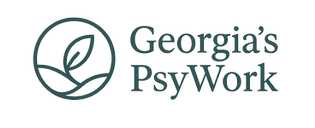Fatigue Management at Work
- Georgia Hodkinson GMBPsS

- Aug 2
- 4 min read
Updated: Aug 15
Georgia Hodkinson GMBPsS
Organisational Psychology Consultant
May 2025

is one of the most underestimated risks in today’s workplaces. While it often hides behind casual remarks like “I’m just tired”, its impact reaches deep; impairing cognition, reducing safety, and quietly eroding productivity.
As an Organisational Psychology Consultant specialising in fatigue risk management, I help organisations design psychologically informed systems that go beyond compliance, building cultures where wellbeing and performance go hand-in-hand.
So, What Really Is Fatigue
Fatigue is not simply the result of a bad night’s sleep, it is defined as a state of mental and/or physical exhaustion that reduces a person’s ability to perform work safely and effectively (HSE, 2023), fatigue is influenced by:
Sleep disruption
High workload
Long hours
Emotional labour
Environmental factors (e.g., heat, noise)
Importantly, fatigue is cumulative and not always consciously recognised by the person experiencing it (Gander et al., 2011). This means traditional “self-report” cultures “if you feel tired, speak up” often fail.
Why Fatigue Management Matters
In safety-critical industries such as energy, healthcare, and transport, fatigue is a serious operational risk. Research shows that 17+ hours of wakefulness can produce impairments equivalent to a blood alcohol level of 0.05% (Williamson & Feyer, 2000).
Consequences include:
Slowed reaction times
Reduced situational awareness
Increased error rates
Higher accident likelihood
Poorer interpersonal functioning
The Health and Safety Executive (HSE) recognises fatigue as a hazard and states that employers have a legal responsibility under the Health and Safety at Work Act 1974 and the Management of Health and Safety at Work Regulations 1999 to manage fatigue-related risk (HSE, 2023).
The Psychology Behind Fatigue
Cognitively, fatigue impairs the executive functions: attention, planning, and working memory. This pushes individuals to rely more on heuristics, mental shortcuts, to speed up decision-making. While useful in routine tasks, heuristics can lead to predictable biases:
Availability heuristic: Overestimating the likelihood of an event based on how easily you can recall relevant examples.
Anchoring: relying too heavily on the first piece of information you receive when making decisions, even if that information is irrelevant
Confirmation bias: where people tend to favor information that confirms their existing beliefs
Tversky & Kahneman’s (1974) foundational work on heuristics and biases underpins much of our understanding of how fatigue influences risky decision-making. Their research continues to inform interventions that aim to “de-bias” decision environments under fatigue.
Causes of Workplace Fatigue
Fatigue emerges from a constellation of workplace and personal influences, including:
Shift patterns (especially rotating or night shifts)
On-call duties and unpredictability
High mental and emotional demands
Workload exceeding capacity
Environmental conditions (e.g., temperature, noise)
Poor sleep hygiene or home-life stressors
In my work I integrated the Bowtie framework (Reason, 1997) to map fatigue causes, consequences, and controls helping employees visualise how fatigue can slip through organisational defences. A tool that my clients have called valuable, especially when they hear of the several high-profile disasters which implicated fatigue.
A Systems Approach to Fatigue Risk Management
The best organisations move beyond individual responsibility and build fatigue into their safety systems. A comprehensive Fatigue Risk Management System is something I can help out with.
1. Governance & Leadership
Fatigue must be recognised at board level. This means visible support from leadership, investment in safe scheduling, and fatigue being logged in risk registers.
2. Fatigue Policy & Procedures
Clear, documented policies outlining maximum working hours, mandatory rest periods (e.g., 11 hours between shifts), and limits on shift length.
3. Fatigue Risk Assessments
Risk-based assessments (HSE, 2006) to evaluate high-risk roles or rosters. Includes assessing factors like task complexity, time of day, and physical demands.
4. Training & Awareness
Training employees in recognising signs of fatigue, understanding how it impairs performance, and fostering a non-punitive culture of disclosure.
5. Fatigue Reporting Mechanisms
Confidential, non-retaliatory reporting systems with feedback loops. Organisations should treat fatigue reports as seriously as near-miss incidents.
6. Monitoring & Evaluation
Use of lagging (e.g., incident rates) and leading indicators (e.g., shift compliance, fatigue reports) to evaluate controls and adapt continuously (Moore-Ede, 2012).
From Compliance to Culture
Fatigue management must include valuing rest, breaking the “hero” myth around overwork, encouraging open dialogue and integrating wellbeing into leadership behaviour.
The most effective culture shift I’ve seen? One where fatigue isn’t just tracked, it’s talked about. Where senior leaders say, “I’m taking a rest because I need to be at my best.”. This was utilising an app that I built for better communication in the firm.
Final Thoughts
In today’s complex and high-demand work environments, fatigue is inevitable. It’s time we stopped seeing tiredness as a weakness and started recognising it as a psychological signal of overload.
By embedding evidence-based fatigue management, organisations can protect employee health, enhance decision quality, and reduce operational risk.
If you're a business leader or HR professional looking to build psychologically informed content or systems on fatigue, safety culture, or workplace wellbeing, I’d love to help.
Whether it’s training design, research synthesis, or internal comms, I translate complex insights into impactful, actionable tools.
References
Gander, P., Hartley, L., Powell, D., Cabon, P., Hitchcock, E., Mills, A., & Popkin, S. (2011). Fatigue risk management: Organizational factors at the regulatory and industry/company level. Accident Analysis & Prevention, 43(2), 573–590.
Health and Safety Executive (2023). Managing fatigue in the workplace.
Moore-Ede, M. (2012). Evolution of fatigue risk management systems: The "FRMS Evolution Pyramid". Industrial Health, 50(4), 303–306.
Reason, J. (1997). Managing the Risks of Organizational Accidents.
Tversky, A., & Kahneman, D. (1974). Judgment under uncertainty: Heuristics and biases. Science, 185(4157), 1124–1131.
Williamson, A., & Feyer, A.-M. (2000). Moderate sleep deprivation produces impairments in cognitive and motor performance equivalent to legally prescribed levels of alcohol intoxication. Occupational and Environmental Medicine, 57(10), 649–655.





Comments